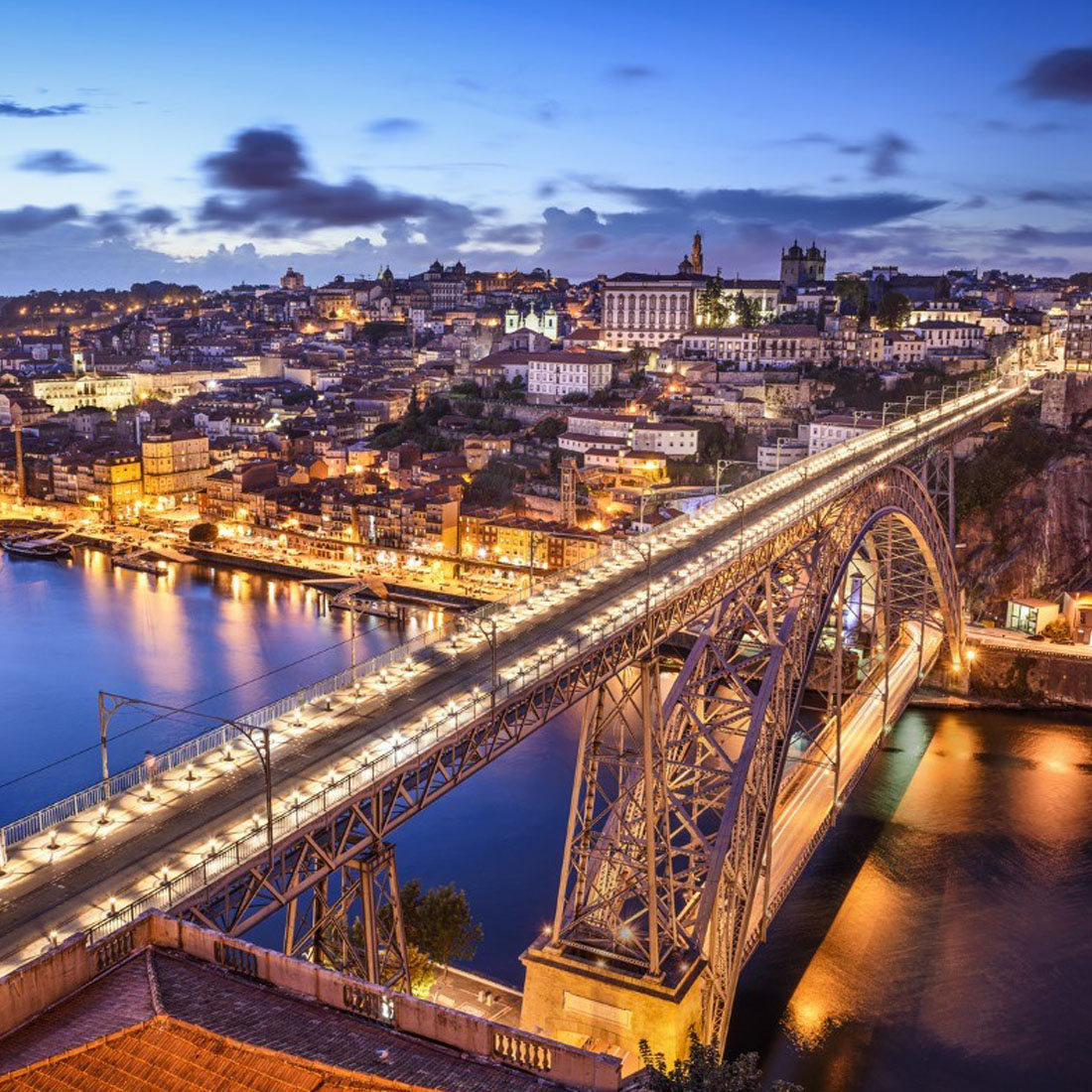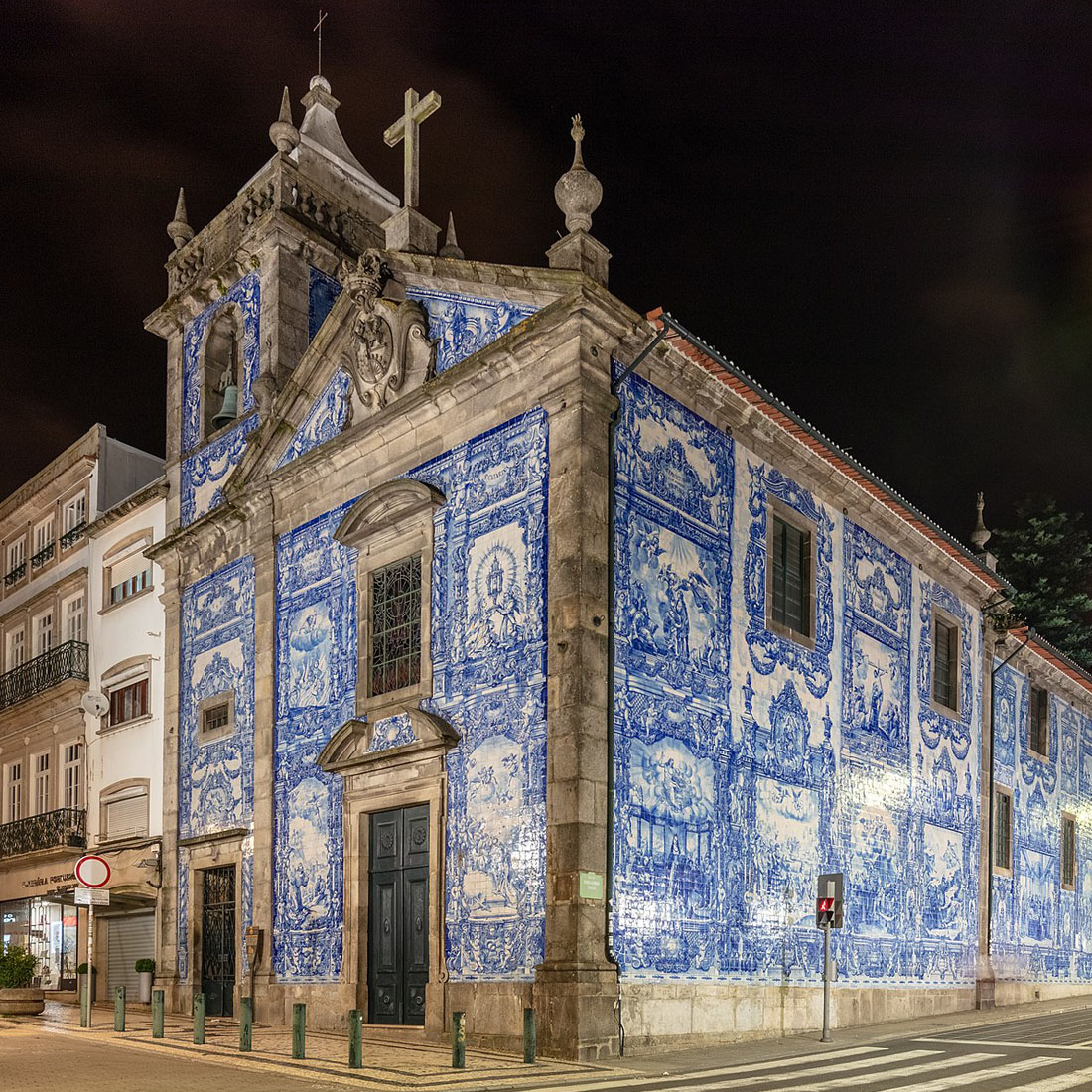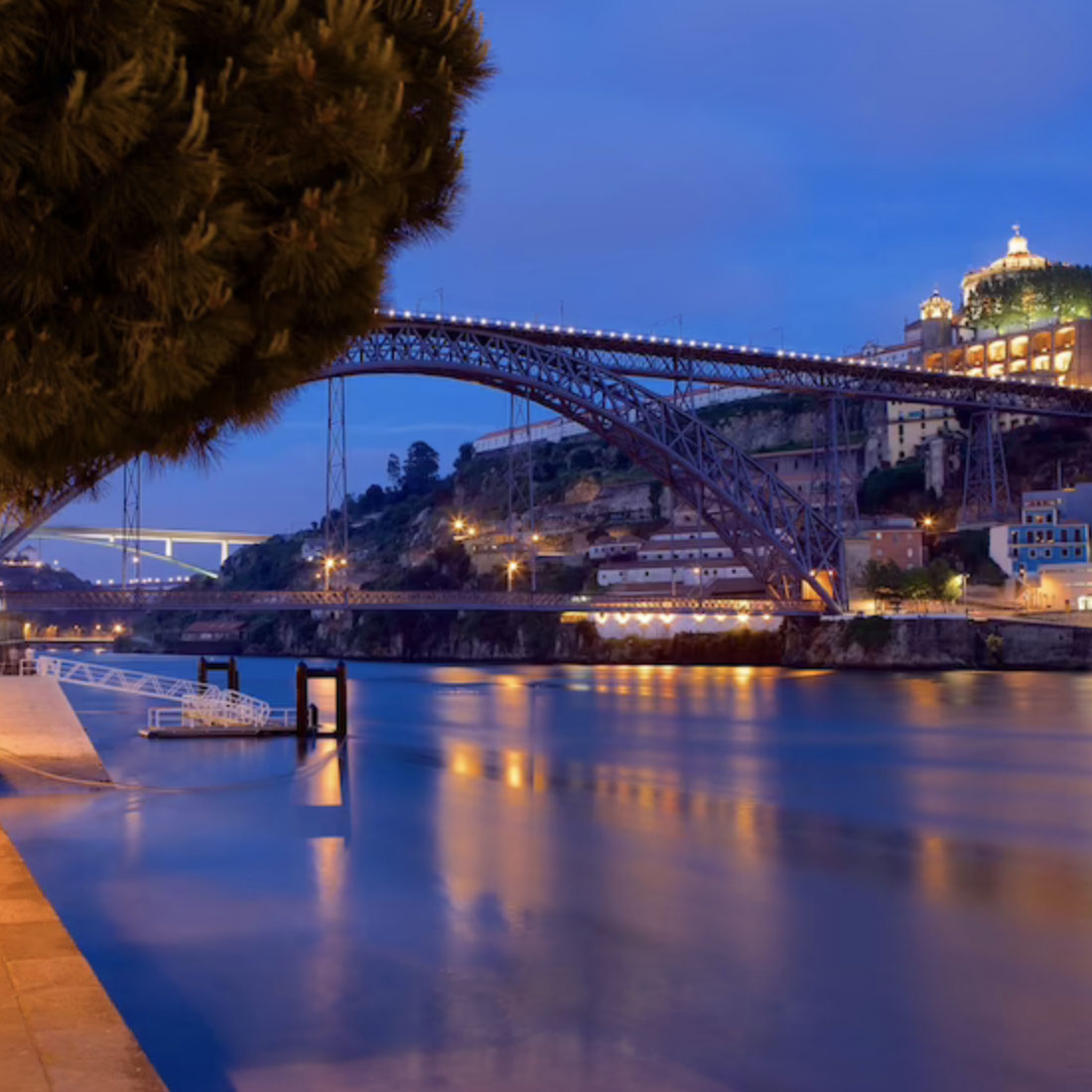OPorto by Night Tour
Since 40.00€
- Book here you tour -
Overview
Enjoy an awesome night with a tour in a historic and typical neighbourhood, with the ancient little streets of the city of Porto.
Details
Porto is well known for Port Wine and for its amazing architecture and at night everything changes, the city and monuments light up, a rare opportunity to appreciate all the details.
That's why Aliados Avenue is the perfect place to start. Discover Ribeira, one of the oldest neighborhoods of the city, where you can observe the traditional houses. You can also enjoy the city lights reflected on Douro River, and find the typical Rabelo boats anchored. Then, we will cross the Luiz I Bridge, and climb up to Serra do Pilar, where you will be dazzled with the fabulous view of the city.
- Pick Up Point
-
Liberdade Square (Pass By) This wide avenue, bordered by a group of buildings from the 1920s and 1940s, is closed on the south side by the Cardosas building (19th century) and on the north side by the Porto Town Hall. In front of the Cardosas Palace, at the center of D. Pedro Square -, a square that is confused with Avenida dos Aliados itself because they are contiguous, - is the statue of D. Pedro IV, the Liberator.
-
The São Bento Railway Station was built in the early 20th century, in the exact location of the former Convent of São Bento de Avé Maria, a 16th-century building. This glass and iron structure was designed by architect Marques da Silva. The vestibule is adorned with twenty thousand tiles painted by Jorge Colaço that illustrate the evolution of transport and the events of history and ways of life of the Portuguese living in this region.
-
The Cathedral of Porto is a building dating from the 12th/13th century that has been expanded and renovated over the centuries until its final configuration in the 20th century, always maintaining the initial configuration of a medieval cathedral. Special mentions: - Gothic Chapel of St. John the Evangelist and its cloister - The expansion of the chancel - Chapel of the Blessed Sacrament and its silver altar.
10 minutes stop • Admission Ticket Not Included -
D. Pedro Pitões Tower / Medieval Tower It is a medieval tower discovered at the time of the construction of the front courtyard of the Cathedral. It was then relocated to the side of the Cathedral, and rebuilt there. This is where Porto Tourism Office is located.
-
Building of Gothic origin whose original construction dates from the fifteenth century. However, in the seventeenth century, it underwent some changes on which the beautiful Renaissance portal was added, as well as the gilded carving inside.
-
This wall began its works in the fourteenth century, in the reign of D. Afonso IV, to replace the old wall and cope with the expansion of the city. Although it was almost completed around 1370 its completion was only in the reign of D. Fernando, in 1409, hence the name assigned. In the 18th century, after no longer being needed in military terms, the wall began to be demolished and only a few parts survived to this day.
-
Placed in front of D. João I Square, the Theatre was inaugurated in 1913 but the changes in the urban centre created the need to rethink and modernize this Theatre. After the refurbishment of the former National Theatre in 1913, the Rivoli Theatre was inaugurated in 1932, adapted to the cinema and with the programming of opera, dance, theatre and concerts. In 1989 it became the property of the Porto City Council and closed in 1992 for a total remodelling and expansion, being completed in 1997.
-
Designed by Carlos Amarante in neoclassical style, it was financed by the Literary Grant, a tax on wine, in 1803. The building, of classic style, has some similarities with the Hospital Santo António. In 1911, it housed the Faculty of Sciences and is currently home to the Rectory and the Museum of Natural History and the Museum of Science of the University of Porto.
-
The Clérigos Tower is one of the most emblematic monuments of the city of Porto. This Baroque work by Nicolau Nasoni was built in the first half of the 18th century. It provides a panoramic view of the city and the Douro River, which can be seen from the top of the tower, makes climbing 240 steps worth the effort. Interestingly, this tower appeared in the 2021 Hollywood blockbuster film "Suicide Squad."
10 minutes stop • Admission Ticket Not Included -
This railway structure, by Edgar Cardoso, connects the Campanhã station in Porto to all destinations in the South. Its inauguration took place on St. John's Day on June 24, 1991. The bridge adopts a gantry solution, with three spans (two of 125m and one of 250m) supported by two majestic pillars founded on the Douro River bed near each of the banks.
-
Created to replace the suspension bridge, it is Gustave Eiffel's first masterpiece - in which he worked with his partner and former disciple Theóphile Seyrig - and was inaugurated in Porto in 1877 and remained in operation for 114 years until its use was replaced by São João Bridge. It consists of a biarticulated arch that supports the single-track rail board through truss pillars.
10 minutes stop • Admission Ticket Not Included -
The bridge was inaugurated on March 30, 2003, after a project by engineer Adão da Fonseca, to replace the top of the D. Luís I Bridge through which currently one of the Porto Metro lines passes. With a deck of 371 meters long and 20 meters wide, it is a bridge in arch of the Maillart type, with a span/arrow ratio of 11.2m for a 280m arch span, thus being a world record, of domains never before achieved in this typology of bridges. It is a type of bridge considered the slenderest by experts.
-
In 1879, the government determines the opening of a tender for the "construction of a metal bridge over the Douro River, in the place that is most convenient in front of the city of Porto, for the replacement of the current suspension bridge". The proposal of the Belgian company Société de Willebroeck was the winner, with a project by Engineer Teófilo Seyrig, who had already worked with Gustave Eiffel on the construction of the Ponte D. Maria Pia. The bridge was inaugurated in 1886 (upper board) and 1888 (lower board and full operating entrance). This bridge, covered by the whole of the Historic Center of Porto on the UNESCO World Heritage list, consists of the largest wrought iron arch in the world.
-
The suspension bridge, officially called D. Maria III, was created as a necessity for a permanent bridge that would connect Porto and Gaia. This work of the French company Claranges Luccote et Compagnie, was inaugurated in 1843, but was deactivated after four years due to a feeling of insecurity of those who passed through it. Currently, there are only two stone pillars left, shaped like an obelisk.
-
Classified as a National Monument, the Palácio da Bolsa is the property and place of the Commercial Association of Porto. It was designed by Joaquim da Costa Lima in neoclassical style in 1842 and built on the site of the former Convent of San Francisco, which was completely destroyed in a fire at the time of the Siege of Porto. Situated in the historic center, it is one of the most visited monuments, with the famous Arab Room as its highlight. A Cultural and Conference Center, the Bolsa Palace is a place with unique conditions for holding events.
-
The Monastery of Serra de Pilar is located on an elevation called Serra do Pilar on the bank of the Douro River in Vila Nova de Gaia. The monastery belonged to the Order of St. Augustine; its construction began in 1538, but lasted for centuries to come in several stages of construction which resulted in a significant change in the initial design. It is considered one of the most remarkable buildings of classical European architecture due to the circular shapes of the church and cloister. It currently serves as a religious, cultural and military site. The monastery was classified as a National Monument in 1910 and in 1996, together with the Historic Center of Porto and the Luís I Bridge, it became classified as a UNESCO World Heritage Site.
10 minutes stop • Admission Ticket Not Included -
It is a garden at the highest point of a hill in Vila Nova de Gaia, reachable by crossing the Luis I bridge. From up there you can see the whole city of Porto, its landscape and also the banks of Douro river in Gaia. It is a stunning view from a characteristic place.
In the garden, you can sit in the grass and admire the view or you could even drink a glass of Porto wine if you wish (because on that side of the river there are many wineshops). It is a romantic place especially at sunset and at night, which is the best time to go..
10 minutes stop • Admission Ticket Not Included - Drop Off
| Pick Up - Drop Off | At your hotel, lodging in Porto or Leixões Cruise Ship Terminal |
|---|---|
| Start - End | 20:00h - 23:00h or 21:00h - 00:00h (approx) |
| Icluded |
- Pick up/drop off at your location - Certified Tourist Driver. - Private transport - Top class vehicle - Free Wi-Fi - Bottled water - Insurances and fees |
| Extra |
- Adicional Stop- €15.00 each - Fado Concert - €15.00 to €20.00 - Dinner with Fado - €45.00 to €50.00 |
| Not Included |
- Dinner - Tickets - Gratuities (optional) - Personal expenses - Any service that is not clearly specified in the inclusions |
Not sure this is the right tour for you?
That’s totally fine! Besides our standard tours, we also design personalised tours according to your preferences and pace. Just send us a message and we’ll shortly get in contact with you.
Contact Us© 2023 LATITUDE 351
All Rights Reserved.



